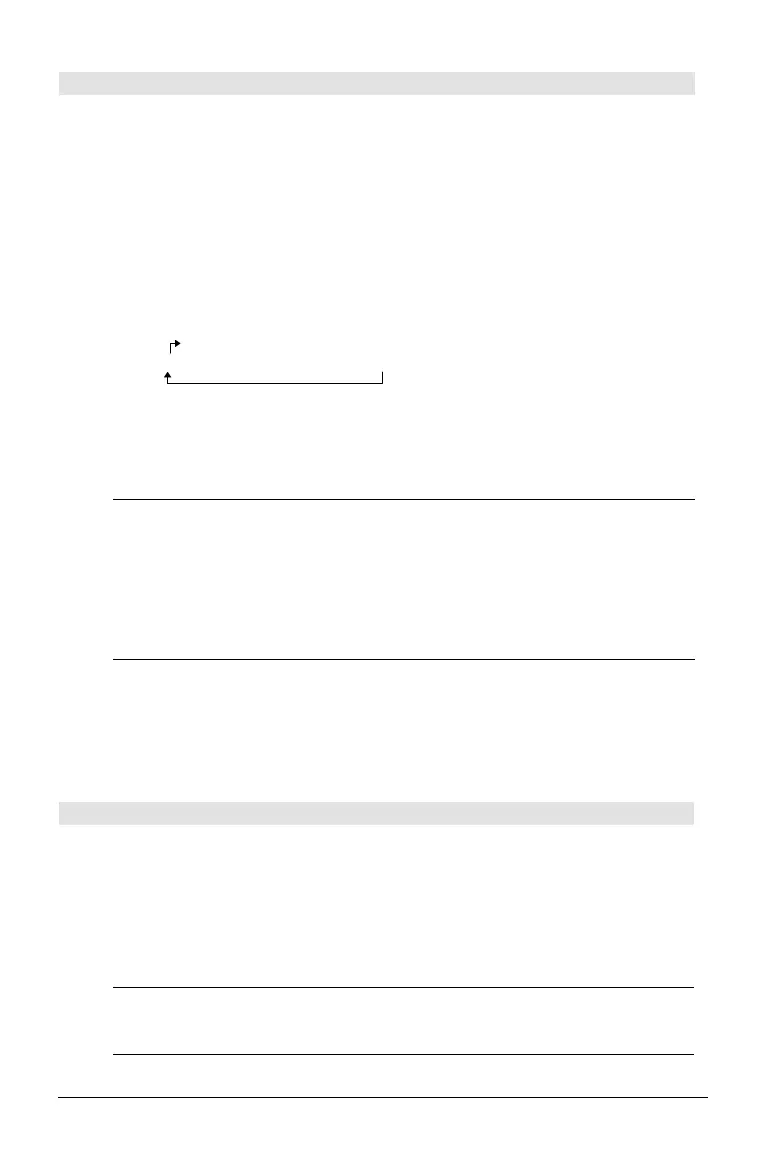230 Appendix A: Functions and Instructions
rotate() MATH/Base menu
rotate(
integer1
[,
#ofRotations
]) ⇒
integer
Rotates the bits in a binary integer. You can enter
integer1
in any number base; it is converted
automatically to a signed, 32-bit binary form. If
the magnitude of
integer1
is too large for this
form, a symmetric modulo operation brings it
within the range.
In Bin base mode:
rotate(0b1111010110000110101)
¸
0b10000000000000111101011000011010
rotate(256,1) ¸ 0b1000000000
If
#of Rotations
is positive, the rotation is to the
left. If
#of Rotations
is negative, the rotation is to
the right. The default is ë 1 (rotate right one bit).
For example, in a right rotation:
In Hex base mode:
rotate(0h78E) ¸ 0h3C7
rotate(0h78E,ë 2) ¸0h800001E3
rotate(0h78E,2) ¸ 0h1E38
0b00000000000001111010110000110101
produces:
0b10000000000000111101011000011010
The result is displayed according to the
Base
mode.
Important: To enter a binary or hexadecimal
number, always use the 0b or 0h prefix (zero,
not the letter O).
rotate(
list1
[,
#ofRotations
]) ⇒
list
Returns a copy of
list1
rotated right or left by
#of
Rotations
elements. Does not alter
list1
.
If
#of Rotations
is positive, the rotation is to the
left. If
#of Rotations
is negative, the rotation is to
the right. The default is ë 1 (rotate right one
element).
In Dec base mode:
rotate({1,2,3,4}) ¸
{4 1 2 3}
rotate({1,2,3,4},ë 2) ¸
{3 4 1 2}
rotate({1,2,3,4},1) ¸
{2 3 4 1}
rotate(
string1
[,
#ofRotations
]) ⇒
string
Returns a copy of
string1
rotated right or left by
#of Rotations
characters. Does not alter
string1
.
If
#of Rotations
is positive, the rotation is to the
left. If
#of Rotations
is negative, the rotation is to
the right. The default is ë 1 (rotate right one
character).
rotate("abcd") ¸ "dabc"
rotate("abcd",ë 2) ¸ "cdab"
rotate("abcd",1) ¸ "bcda"
round() MATH/Number menu
round(
expression1
[,
digits
]) ⇒
expression
Returns the argument rounded to the specified
number of digits after the decimal point.
digits
must be an integer in the range 0–12. If
digits
is not included, returns the argument
rounded to 12 significant digits.
Note: Display digits mode may affect how this is
displayed.
round(1.234567,3) ¸ 1.235
round(
list1
[,
digits
]) ⇒
list
Returns a list of the elements rounded to the
specified number of digits.
round({p,‡(2),ln(2)},4) ¸
{3.1416 1.4142 .6931}
Rightmost bit rotates to leftmost.
Each bit rotates right.

